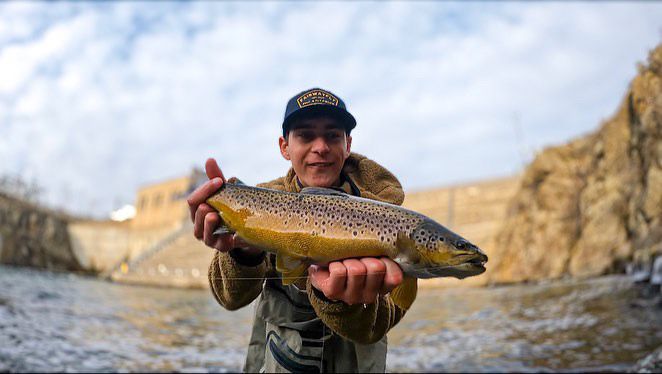
Mastering Nymphing Techniques: Fly-Fishing !
Nymphing, a sub-surface fly-fishing technique, often proves to be the key to success when targeting elusive trout in rivers and streams. In this deep dive, we'll explore the essentials of nymphing, providing insights to help you master this effective method.
1. Understanding Nymphs:
Nymphs are aquatic insects in their immature stages, and they form a significant portion of a trout's diet. Knowing the life cycle of these insects is crucial for successful nymphing. Common nymph patterns imitate various stages, including larvae, pupae, and emergers.
2. The Rig Setup:
A typical nymphing setup includes a fly rod, reel, and a specialized nymphing line. Use a leader with enough weight to get your flies down to the desired depth. Split shot weights and strike indicators help adjust the depth and detect subtle strikes.
3. The Drift Technique:
A natural drift is the key to fooling trout. Cast upstream, allowing your nymphs to drift naturally with the current. Keep an eye on your strike indicator, looking for any hesitation or unnatural movement that signals a potential fish bite.
4. Depth and Presentation:
Experiment with different depths until you find the sweet spot where trout are feeding. Adjust the weight and length of your leader accordingly. Vary your presentation by incorporating subtle twitches or lifts to mimic the movement of real nymphs.
5. Reading the Water:
Identifying the right water is crucial for nymphing success. Focus on slower-moving pools, seams, and pockets where trout are likely to hold. Observe the water's surface for clues about the depth and speed of the current.
6. Nymphing Techniques:
Explore various nymphing techniques, such as Euro nymphing, Czech nymphing, and indicator nymphing. Each method has its nuances, offering anglers different tools to adapt to different water conditions.
7. Fly Selection:
Selecting the right nymph patterns is essential. Carry a variety of sizes and colors to match the specific insects present in the water. Be observant of the surroundings and switch flies if needed to find what the trout are feeding on.
8. Patience and Persistence:
Nymphing requires patience and persistence. It may take time to master the subtle art of detecting strikes and achieving a natural drift. Stay observant, be in tune with the water, and adjust your approach based on the conditions.
Nymphing is a skill that rewards those who invest time in learning its intricacies. As you delve into this deep dive into subsurface fly-fishing, remember that practice and observation are your greatest allies. With dedication, you'll unlock the secrets to consistently bringing trout to the net using nymphing techniques.
Happy fishing! ✨
https://www.8fans.com/product/8fans-fly-fishing-rod-and-reel-combos-9-00----3-4wt
https://www.8fans.com/product/8fans-breathable-3-layers-waist-waders
https://www.8fans.com/product/8fans-new-design-3-layer-ocean-camouflage-lightweight-waterproof-and-breathable-chest-waders
https://www.8fans.com/product/ultralight-non-slip-felt-sole-fishing-wading-boots
https://www.8fans.com/product/8-fans-breathable-2-layers-jackets

